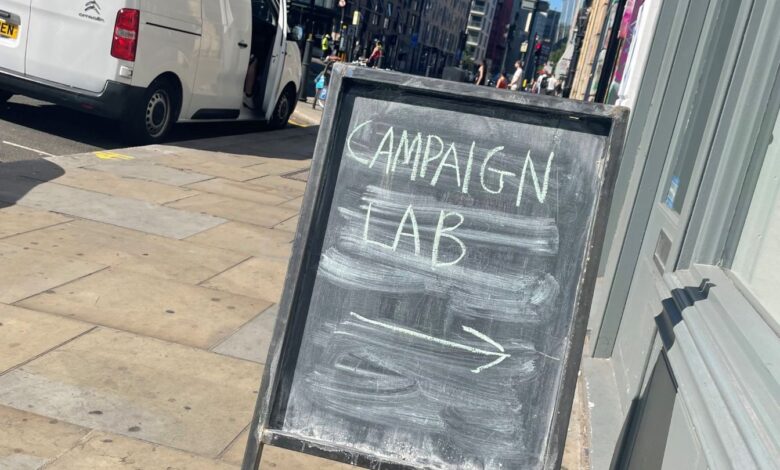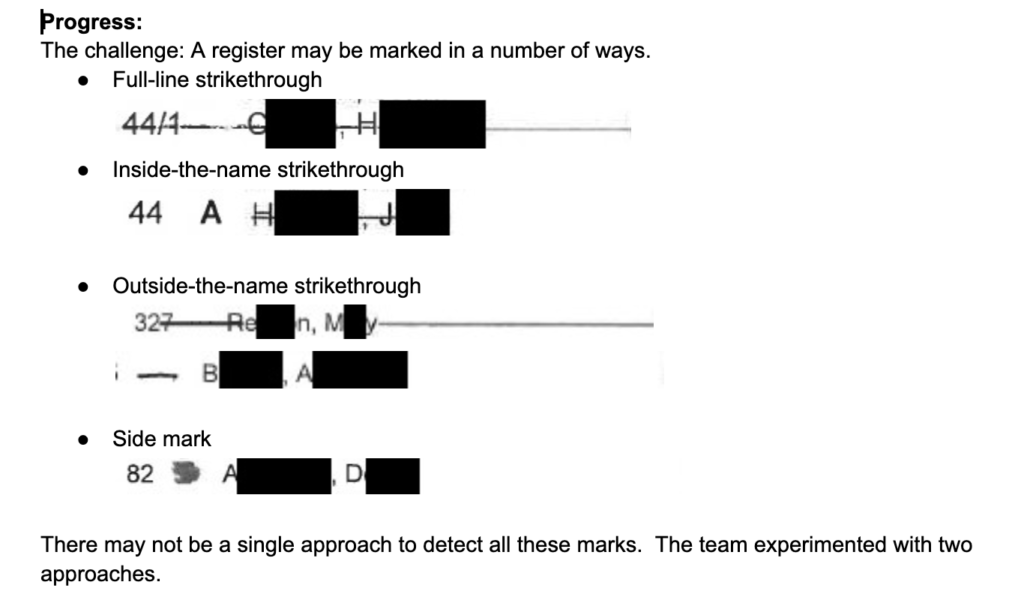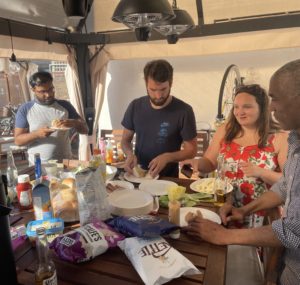
Data in politics – tea leaves reading or campaigner’s best friend?
5 Lessons from Campaign Lab (July 2022)
Florence Nightingale has set up the bar for Data-For-Good high, with her tireless data gathering from war hospitals, innovative statistics, creative data visualisations that forced change of hospital practice saving thousands of lives.
In modern days, we have far exceeded Florence’s ability to gather data but making sense of it and using it effectively is still a huge challenge, particularly in politics.
Elections are good example of an event that tends to capture mountains of data. Political parties try to outdo themselves in the size and scope of their data capture programs, both before the elections, during and after.
The assumption is that “more is better”. We decided to put that view to test and explore the datascape around UK Local Election data from 6/5/2022. We looked at the challenge of automating input of manually gathered elections data, managing political dis-information on social media and finding gaps in understanding of party membership demographics.
The teams from Campaign Lab, Newspeak House, Cybersalon.org and other data-led organisations have gathered on a hybrid hackathon, the second in the series, following up on the last year successful “Hackathon for 2021 Job Armaggedon”.
Hackathon leaders, Hanna O’Rourke and James Moulding invited data scientists, political engagement professionals, computer vision experts and experienced campaigners to collaborate in a day-long event in London and on Zoom.
Campaign Lab Hack 2 – July 10 2022 (Newspeak House)
On the day, the teams formed quickly around the databases available, looking to produce a plan of action, investigation, coding time and producing ‘next steps’ recommendations for the political parties and their in-house data teams.
5 Lessons that can help future campaigners
Lesson 1: Don’t assume the data you have gathered manually during elections can be ingested into digital formats.
“Marked Register’ of who voted, done at every local campaign by volunteers, will have hand-written marks per each name of voter. The challenge was that those marks can be done by volunteers in 4 different ways – a full line strikethrough, inside the name strikethrough, outside the name strikethrough and Side mark. Daniel Griffin and Jason team tested Google Vision API as well as Daniel’s own computer vision processing code. The combination of both approaches was good, but not sufficient for every type of marking. Neither Google API or Dan’s code could detect “inside the name strikethrough”. The team recommended improved standardisation in instructions to volunteers marking the register next time, but we were happy with the technique of combo tools that could process correctly a significant portion of data, saving hundreds of hours of volunteers’ time.
Lesson 2: By the time you get your election data, the next one is already starting
Don’t assume that a month after local elections, you will have enough data to run audits.
We planned the hackathon more than two months after Local Elections, assuming this will be sufficient for detailed data to filter through to the point we can start analysing.
Alas, due to issues (See Lesson 1) and lack of manpower, manual nature of collection and upload and other reasons, means that the availability of election data is very limited in the first year following the event. Just a very top level comparative data from 2018-2022 elections can be found here.
For the future, many elements of this process need to be automated in a verifiable way to speed up the availability of the data post elections. Of course, the problem would be solved if we managed to move to Online Voting, something that WebRoots campaigned for and a process that would result in prompt availability of data.
Lesson 3: Avoid making any assumption about your members’ demographics
The view amongst Labour campaigners was that the people who came to events and rallies, are likely to be the ones that support the campaigns with donations and contributions. We examined this and other assumptions and realised that this was only confirmed for a limited group of demographics, according to Labour Membership Data set.
The audit for “Improving Engagement of Labour Members” started from identifying age groups (based on Date of Birth) and their behaviour (Responding to Events), to support better communication with each of the groups.
A quick Audit of data available in “Donation Database”, “Engagement Database “ and “Paid Members” database was conducted and it became clear from the analysis of people who confirm their events/rallies attendance, and their demographics that the older age groups (50+) have somewhat higher propensity to attending events, are more active, providing high proportion of volunteers, supporters that are generous with their time for In Person gatherings.
Older groups, pre-pension and pensioners are seemingly more active, frequently attending gatherings – more often than young people, students, graduates, under 30 years of age groups.
The group between 30 to 50 years emerged as somewhat less active. Party activists offered a hypothesis that time constraints, family obligations and full-time work makes event attendance inconvenient for that age group. To improve engagement, the campaigners may need to reach out to offer this group ways to support the party that do not need the physical presence/time, yet are engaging and rewarding experiences.
Lesson 4: Avoid assumption of correlation between propensity to join events and support for favourite causes with financial contribution
The assumption on the campaigning bench was that those who attend events and are active are also those who can be counted to support the party with donations.
Again, this assumption turned out to be only partially true. The older age groups had higher propensity to be more active and also, supported the party financially more than other age groups.
However, the younger groups, under 30 years old, were happy to join events (although only half as frequently as the older, pre-Pension group) but their monetary support was negligible. Such pattern may explain reluctance of politicians of any hue to engage with younger voters but it also opens up opportunity to ask for smaller, more affordable donations.
Lesson 5: Supporters who contribute to the party financially, do it regularly and consistently but only for GE
We looked at the data in some detail, and the conclusion was that financial support indeed is offered on regular basis, but only present in pre- General Elections season, dropping to very low levels in-between the elections.
 This pattern may be related to less frequency financial request from the party, only increasing during highly contested by-elections (see Wakefield, where large number of the party members donated, sourced well from beyond the actual local area).
This pattern may be related to less frequency financial request from the party, only increasing during highly contested by-elections (see Wakefield, where large number of the party members donated, sourced well from beyond the actual local area).
This is an issue noted by Areeq Chowdhury (newly elected councillor from Canning Town) who commented that political parties can’t be just for Xmas or General Elections. By the time it comes to elections, people generally made up their mind and it is often way too late to persuade them to re-think. The engagement, dialogue and relationship building would be more effective it it was to be ongoing, with ‘little and often’ approach, rather than only once very four years request for support.
See Areeq’s comments in detail at the beginning of this video from Cybersalon event on 10th May “Democracy 2030”, with him and Simon Wyatt (Westminster ward) sharing their experiences campaigning in their very different wards – both successful, one with max data available, supporting a shift to Labour from a traditionally Con ward. The other example is from Canning Town, where for a variety of reasons, the data was simply not available to candidates.
Other projects explored capturing broadcast data from YouTube audio file from all the videos with dis-information and attributing lies to your own candidates , then turning the list into alert to each candidate for the purpose of mitigation(Sri and Phil).
We explored the local stats in comps to Local Election data, although in incomplete format (Nik Loynes) it was still quite handy. In a separate project (Justin), we were looking at different lenses on local elections data. More on those project to come shortly.
Thank you to Hannah, James, the team and Newspeak House for hosting and a delicious vegetarian BBQ –with first fully veggie burgers on a tech event for me, as most of us were non-meat eaters! Food strategies and how to support agri-business in shift away from meat production is on for next year for our Data For Good agenda.
Email to join the next Campaign Lab scheduled for early September
Resources
2. What data strategy worked for Local Elections








